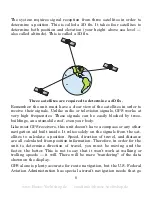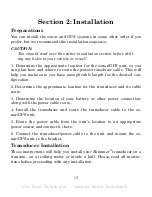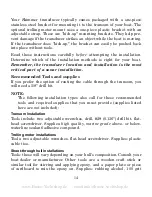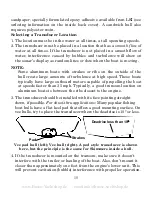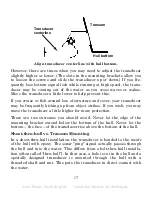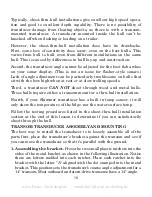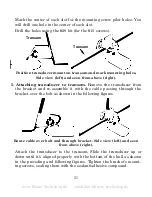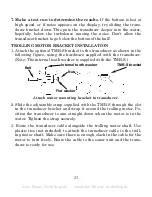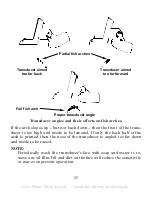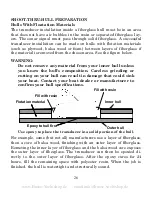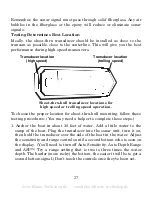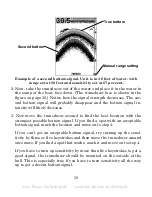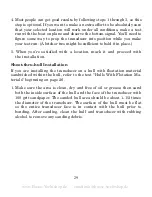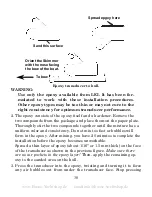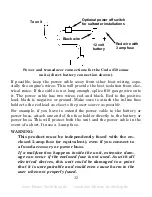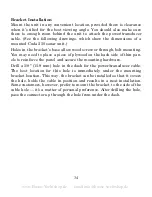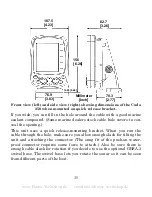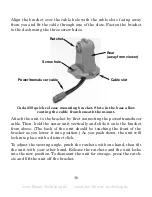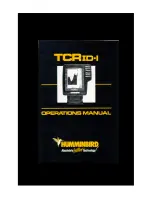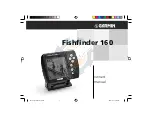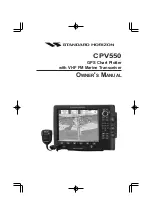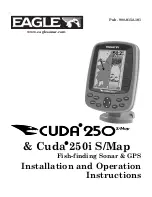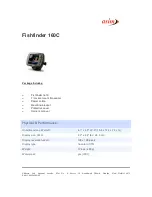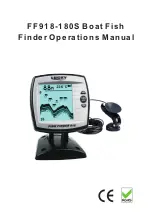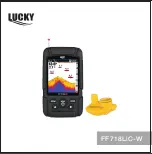
22
Adjust the transducer so that it's parallel to the ground and tighten
the nut until it touches the outer washer, then add 1/4 turn.
Don't
over tighten the lock nut!
If you do, the transducer won't "kick-up" if
it strikes an object in the water.
Align transducer centerline with hull bottom and attach to transom.
6. Route the transducer cable through or over the transom to
the sonar unit.
Make sure to leave some slack in the cable at the
transducer. If possible, route the transducer cable away from other
wiring on the boat. Electrical noise from the engine's wiring, bilge
pumps, VHF radio wires and cables, and aerators can be picked up by
the sonar. Use caution when routing the transducer cable around
these wires.
WARNING:
Clamp the transducer cable to the transom close to the
transducer. This can prevent the transducer from enter-
ing the boat if it is knocked off at high speed.
If you need to drill a hole in the transom to pass the connector through,
the required hole size is 5/8".
Caution:
If you drill a hole in the transom for the cable, make sure it is lo-
cated above the waterline. After installation, be sure to seal the
hole with the same marine grade above- or below-waterline seal-
ant/adhesive used for the mounting screws.
Flat-bottom hull
Deep-"vee" hull
Bottom
of
hull
www.Busse-Yachtshop.de email: [email protected]

